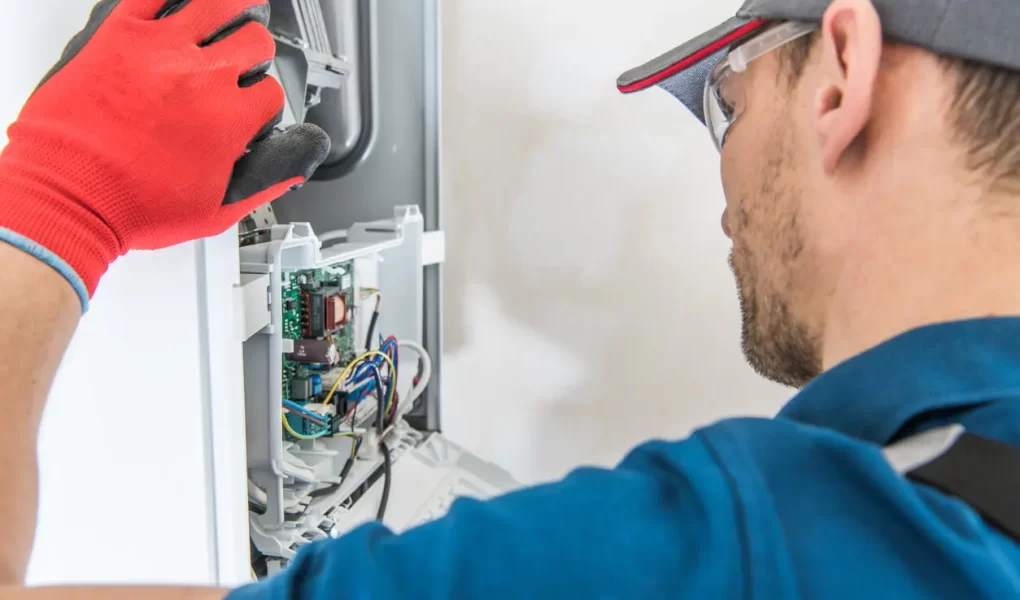Finding water at the bottom of your furnace can be perplexing and concerning. Furnaces are designed to heat your home, and the presence of water can signal potential issues that need attention. Understanding the reasons behind this phenomenon, its implications, and how to address it can help prevent further damage and ensure your furnace operates efficiently. This article explores the common causes of water accumulation in furnaces, the associated risks, and steps for resolution.
Table of Contents
ToggleCommon Causes of Water in Furnaces

- Condensation from High-Efficiency Furnaces:
- High-Efficiency Furnaces: These furnaces, also known as condensing furnaces, are designed to extract more heat from the exhaust gases, which causes water vapor to condense. This condensation needs to be drained properly.
- Blocked Condensate Drain: If the condensate drain is clogged or blocked, water can accumulate at the bottom of the furnace. Regular maintenance and cleaning of the condensate drain can prevent this issue.
- Leaky Humidifier:
- Furnace Humidifier: Many homes have humidifiers integrated into their HVAC systems to maintain optimal indoor humidity levels. A leak in the humidifier can cause water to pool at the base of the furnace.
- Humidifier Malfunction: Regular inspection of the humidifier for leaks or malfunctions can help identify and fix issues before they cause significant water damage.
- Air Conditioner Drainage Issues:
- Combined HVAC Systems: In homes where the air conditioning unit shares the same ductwork as the furnace, the AC’s condensate drain line can sometimes become clogged or damaged, leading to water pooling around the furnace.
- Condensate Overflow: Ensure that the AC condensate line is clear and functioning properly, especially during peak cooling seasons.
- Plumbing Leaks:
- Nearby Plumbing: Sometimes, the source of water may not be the furnace itself but nearby plumbing pipes. A leak in a water supply line or drainage pipe can cause water to collect around the furnace area.
- Plumbing Inspection: Regularly inspect plumbing fixtures and pipes near your furnace to detect and repair leaks promptly.
- Faulty Furnace Exhaust Pipe:
- Exhaust Pipe Issues: In some cases, the furnace’s exhaust pipe may develop leaks or become disconnected, allowing moisture to enter the furnace area.
- Exhaust System Inspection: Inspect the exhaust system for any signs of leaks or disconnection and repair as needed to prevent water intrusion.
Implications of Water in the Furnace
Water accumulation in or around your furnace can lead to various problems, ranging from minor inconveniences to serious safety hazards. Understanding these implications underscores the importance of addressing the issue promptly.
- Electrical Damage:
- Short Circuits: Water can cause electrical components within the furnace to short circuit, leading to potential system failure or even fire hazards.
- Corrosion: Prolonged exposure to water can corrode electrical connections and components, compromising the furnace’s functionality and safety.
- Reduced Efficiency:
- Heat Exchange Impairment: Water can damage the heat exchanger, reducing the furnace’s ability to effectively heat your home.
- Increased Energy Consumption: A compromised furnace may work harder to maintain desired temperatures, leading to higher energy bills.
- Structural Damage:
- Rust and Corrosion: Metal components of the furnace, including the heat exchanger and venting system, can rust and corrode when exposed to water, leading to structural weaknesses.
- Ductwork Damage: Water can also damage ductwork, leading to air leaks and reduced efficiency in heating and cooling your home.
- Mold and Mildew Growth:
- Health Risks: Standing water and increased humidity levels can promote the growth of mold and mildew, which can cause respiratory issues and other health problems for occupants.
- Air Quality Deterioration: Mold spores can circulate through the home’s HVAC system, reducing indoor air quality.
Steps to Address Water in the Furnace
Addressing the presence of water in your furnace involves identifying the source of the water, repairing any damage, and implementing preventative measures to avoid future occurrences.
- Identify the Source:
- Inspection: Conduct a thorough inspection of the furnace, humidifier, air conditioning system, and nearby plumbing to pinpoint the source of the water.
- Professional Diagnosis: If you’re unable to determine the source, consider hiring a professional HVAC technician to diagnose the problem.
- Repair and Maintenance:
- Clear Condensate Drains: Ensure that all condensate drains and lines are clear of blockages and functioning properly.
- Fix Leaks: Repair any leaks in the humidifier, air conditioning system, or nearby plumbing.
- Replace Damaged Components: Replace any corroded or damaged components within the furnace to restore its efficiency and safety.
- Preventative Measures:
- Regular Maintenance: Schedule regular maintenance for your HVAC system to ensure all components are in good working condition and to prevent future issues.
- Humidity Control: Monitor and control indoor humidity levels to reduce the risk of condensation and water accumulation.
- Install Safety Devices: Consider installing safety devices such as a float switch or water sensor that can detect water accumulation and shut off the system to prevent damage.
- Monitor for Recurrence:
- Ongoing Observation: After repairs and maintenance, continue to monitor the area around the furnace for any signs of water accumulation.
- Regular Inspections: Regularly inspect the furnace and associated systems, especially during seasons of high usage, to catch potential issues early.




